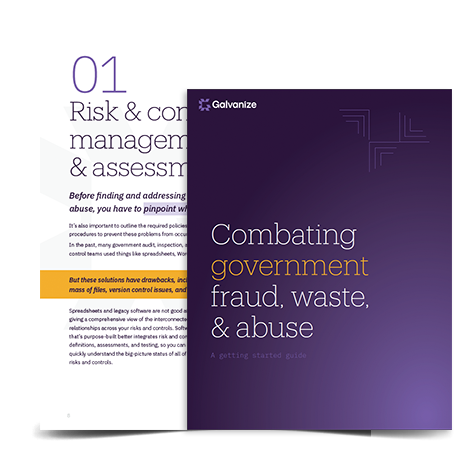Governments around the world are particularly vulnerable to fraud, but data analytics technology is a great tool in fraud prevention programs.
It’s an unfortunate reality that every government organization is vulnerable to fraud committed by employees. Fraud is especially common in purchasing cards (P-Cards) and travel and entertainment (T&E) expenses. Both involve massive volumes of transactions, making it easier for fraudsters to avoid being discovered.
On top of this employee fraud, unintentional waste and abuse also happens. For example, the US Government Accountability Office estimates that improper payments in government programs totaled $141 billion in 2017.
A lot of this fraud and waste occurs within government programs like unemployment insurance, healthcare, and social security.
“It’s proven that purpose-built data analytics technology reduces instances of fraud, waste, and abuse.”
So, how can you better protect public funds?
Even with strict policies, procedures, and controls in place, it’s impossible to stop all instances of fraud. But it is possible to find indicators—those data trails inside millions of processed transactions—that can help you act faster.
It’s proven that purpose-built data analytics technology reduces instances of fraud, waste, and abuse. According to the Association of Certified Fraud Examiners, government organizations using data monitoring and analysis software saw 52% fewer losses, and experienced 58% faster detection of fraud occurrences.
How is data analysis used to detect government fraud?
There are two primary ways to use data analysis to detect fraud, waste, and abuse:
- Analyze entire populations of transactional data to look for anomalies. This doesn’t necessarily prove that fraud or abuse has actually occurred, but it’s an effective way to flag situations that just don’t make sense and need further investigation.
- Analyze transactions for indicators of known risks of fraud, waste, and abuse.
Identifying purchasing card fraud
More and more, P-Cards are being used to reduce the costs of traditional procurement processes. While this makes a lot of sense in terms of efficiency and effectiveness, P-Cards are particularly prone to fraudulent use because they’re so easy to use. Here are some common P-Card tests to identify fraud.
Purchases of items intended for personal use
Analytics tests:
Analyze transactions to look for merchant codes, vendor names, and key words that are associated with non-business items and services.
- Identify transactions made on weekends, holidays, or while the employee is on vacation.
- Identify split transactions in which a large purchase is paid for in smaller amounts, just under a review/approval threshold.
Fuel cards
Analytics test:
Look for fuel card usage that is abnormally high compared to others in a similar role.
- Calculate expected mileage for a particular volume of fuel charged and compare to typical or expected travel patterns.
To discover more P-Card analytics tests, download our Combating government fraud eBook.
Identifying travel & expenses fraud
Here are examples of some common data analysis tests you can use to find fraudulent T&E claims.
Duplicate claims
There are many ways fraudulent duplicate T&E claims can occur.
Analytics tests:
- Identify claims for meals for multiple people made on the same day and at the same location as claims made by other employees.
- Identify expenses incurred using both a company credit card (P-Card or general corporate card), as well as through a reimbursement claim.
Unusual usage patterns
Unusually high or frequent T&E expense claims can indicate a potential fraud.
Analytics test:
- Look for patterns of unusually large T&E claims compared to employees in a similar role.
For more T&E analytics tests, download our Combating government fraud eBook.
There are many ways that analytics can help enhance your fraud detection and prevention program. Find out how our fraud management solution can help you.
eBook:
Combating government fraud, waste, & abuse
In this eBook you’ll learn:
- The key features you need in a data analysis tool.
- Five technology solutions for addressing fraud, waste, and abuse.
- How data analytics can identify fraud in P-Cards, T&E, and government programs.
- How to create an effective fraud monitoring program.









